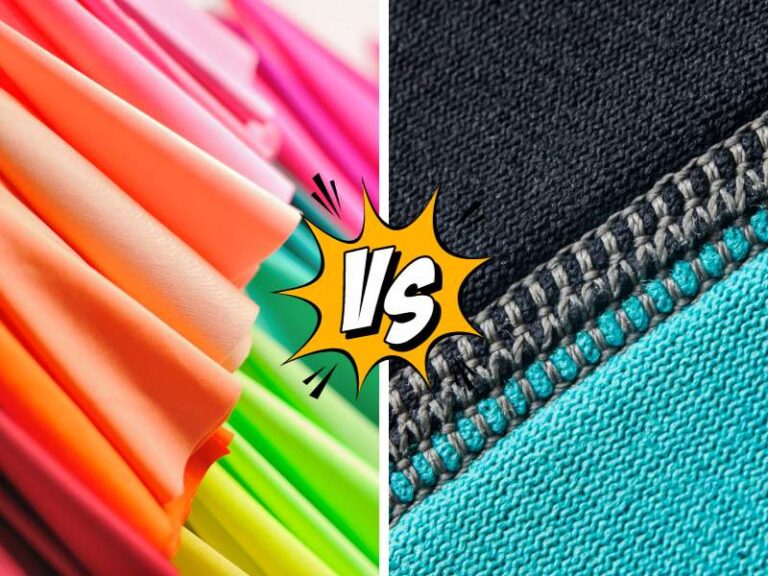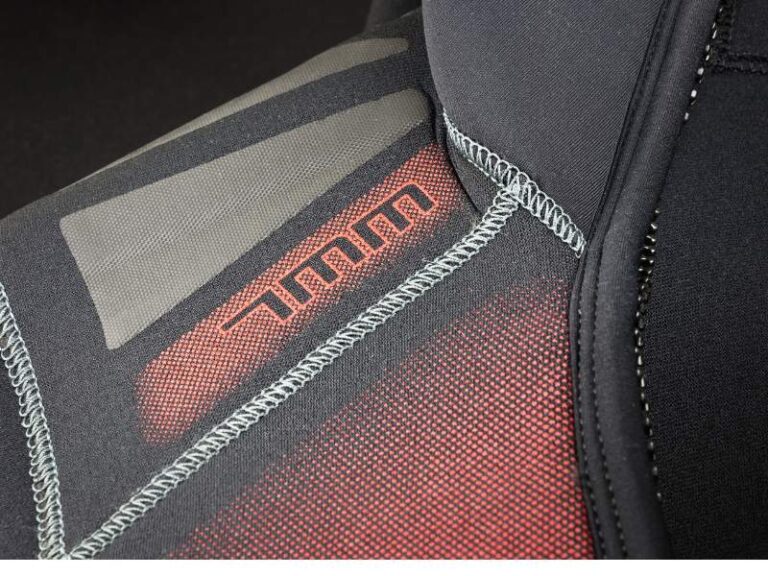What Lasts Longer: Leather or Leatherette?
Leather lasts longer than leatherette, as it is a natural, durable material. Leather is known for its longevity due to its natural properties and craftsmanship.
It is made from animal hides and undergoes a tanning process, which enhances its durability and strength. With proper care and maintenance, leather can withstand wear and tear, making it last for years. On the other hand, leatherette is a synthetic material designed to mimic the look and feel of leather.
Although it is more affordable and easier to clean, it is not as durable as genuine leather. Leatherette tends to crack, peel, and fade over time, especially with frequent use. If you are looking for a material that lasts longer, leather is the better choice due to its natural durability and ability to age gracefully over time.
History And Material Composition
Leather has been used for thousands of years, with evidence dating back to ancient civilizations in Egypt and Mesopotamia. Its durability, flexibility, and versatility made it a prized material for clothing, accessories, and even bookbinding. Leather was a symbol of status and craftsmanship. Over time, leather production techniques improved, leading to the development of various types of leather, such as full-grain, top-grain, and bonded leather.
Leatherette, on the other hand, is a synthetic material designed to imitate the look and feel of real leather. It is composed of a fabric or paper base coated with a layer of polyvinyl chloride (PVC) or polyurethane (PU). Due to its man-made nature, leatherette offers advantages such as affordability, resistance to stains, and easy maintenance. However, it lacks the natural aging and patina that genuine leather develops over time.
When comparing leather and leatherette, it’s important to note that leather is a natural material derived from animal hides, while leatherette is an artificial material made from synthetic components. Leather, being organic, tends to age gracefully and can last for decades with proper care. Leatherette, on the other hand, may have a shorter lifespan as it is more susceptible to wear and tear, fading, and peeling. It’s essential to consider factors such as durability, aesthetics, and personal preference when choosing between leather and leatherette.
Analyzing Leather Longevity
Natural materials and aging: Leather is a natural material that can last for many years. It is known for its durability and strength. Over time, leather develops a beautiful patina, which enhances its appearance and adds character. Genuine leather is made from animal hides, and the aging process gives it a unique quality.
Care and maintenance impact: Proper care and maintenance play a crucial role in extending the lifespan of leather products. Regularly cleaning and conditioning leather items can prevent them from drying out and cracking. Avoiding exposure to extreme temperatures and sunlight can also help preserve their condition.
Signs of wear in leather: Despite its longevity, leather can show signs of wear over time. Common indicators include fading, scratches, and creases. However, these signs are often considered part of the leather’s natural aging process and can contribute to its charm.
Leatherette Durability Explored
Leatherette is a synthetic material that mimics the look and feel of genuine leather. When it comes to durability, leatherette is known for its resilience. It is less prone to wear and tear compared to leather, making it a popular choice for furniture, car upholstery, and accessories. One of the advantages of leatherette is that it requires less maintenance than leather. Cleaning and care procedures are relatively simple, involving wiping with a damp cloth and using mild soap if necessary. However, it is essential to avoid using harsh chemicals or solvents that can damage the material. Common wear in leatherette products includes cracking, peeling, and fading over time. Taking proper care of leatherette items, such as avoiding direct sunlight and regular cleaning, can help prolong their lifespan.
Comparing Wear And Tear
Determining the longevity of leather versus leatherette involves considering various factors. Visual aging is one such aspect. Leather develops a natural patina over time, which adds character and elegance to the material. On the other hand, leatherette maintains its consistency and appearance without any notable changes.
Physical durability in extreme conditions is another important consideration. Leather tends to be more resistant to tears and punctures compared to leatherette. It can withstand harsh weather conditions and retain its quality. Leatherette, while generally durable, may have limitations in extreme climates or conditions.
When it comes to repairability and lifespan, leather often outperforms leatherette. Leather can be repaired and restored, ensuring that it can last for many years. Leatherette, however, may not have the same level of repairability, potentially limiting its lifespan.
Environmental Factors Affecting Lifespan
Leather and leatherette are both popular materials used in various products, but they differ in terms of their lifespan and durability. One of the key factors that affect their longevity is environmental conditions.
Moisture and heat play a significant role in determining how long leather and leatherette will last. Leather, being a natural material, is more susceptible to damage caused by excess moisture and heat. Exposure to high humidity levels can lead to mold growth and deterioration of the leather’s structural integrity over time. Similarly, extreme heat can cause the leather to become dry, brittle, and prone to cracking.
On the other hand, leatherette, which is a synthetic material, is less affected by moisture and heat. It is more durable and can withstand a wider range of temperatures without any significant damage.
Another environmental factor to consider is UV exposure. Leather can fade and lose its color when exposed to prolonged sunlight. Leatherette, however, is usually treated to be more UV resistant and retain its color for a longer period.
Additionally, leatherette is generally more resistant to scratches and stains compared to leather. While leather can develop visible scratches and stains over time, leatherette offers better resistance against such marks, thereby prolonging its lifespan.
The Impact Of Usage Patterns
The impact of usage patterns on the durability of leather and leatherette can vary depending on the specific application. In furniture applications, such as couches and chairs, leather tends to last longer due to its natural ability to withstand wear and tear. Leatherette, on the other hand, may start to show signs of wear and tearing over time, especially with frequent use.
In the world of fashion and accessories, both leather and leatherette can endure daily use, but leather has a reputation for being more durable. Leather bags and jackets can withstand the elements and maintain their quality for a longer period. Leatherette items may not hold up as well and can develop cracks or tears over time.
In automotive interiors, leather is often favored for its longevity and resistance to fading. Leather seats and dashboards can withstand the constant wear and tear associated with daily driving. Although leatherette can also be an option, it may not be as durable and can show signs of wear more quickly.
Cost-benefit Analysis Of Leather And Leatherette
Leather and leatherette are two popular materials used in furniture and automotive upholstery. When comparing their longevity, it is essential to consider both the initial cost differences and the long-term investment value.
Leather typically has a higher initial cost compared to leatherette. However, it’s important to note that leatherette tends to be less expensive upfront while still providing a similar aesthetic appeal.
In terms of long-term investment value, leather outshines leatherette. Leather has a reputation for its durability and ability to age gracefully. It can last for decades with proper care and maintenance. On the other hand, leatherette may wear out sooner, leading to potential replacements in a shorter time frame.
| Material | Replacement Frequency |
|---|---|
| Leather | Decades |
| Leatherette | Years |
Ultimately, the choice between leather and leatherette depends on personal preferences, budget, and intended usage. If you prioritize long-term durability and are willing to invest upfront, leather is the ideal option. However, if affordability and short-term aesthetics are more important, leatherette can be a viable alternative.
The Role Of Market Trends
Leather and leatherette are both popular choices for various products, but when it comes to market trends, leather tends to have a longer lifespan than leatherette. With its durability and timeless appeal, leather remains a sought-after material in the long run.
| The Role of Market Trends |
| Leather’s status in luxury markets Leather has long been associated with luxury and high-end products. In luxury markets, the demand for leather goods remains strong. The durability, craftsmanship, and natural beauty of leather are highly valued by consumers who are willing to invest in quality and longevity. Leather products, such as handbags, wallets, and shoes, are considered timeless and are often passed down through generations. |
| Leatherette’s growth in vegan and eco-conscious segments With the rise of veganism and the growing concern for animal welfare and environmental sustainability, the popularity of leatherette has been on the rise. Leatherette, a synthetic material that mimics the look and feel of leather, offers an alternative for those who want a cruelty-free and eco-friendly option. It has gained traction in the fashion and furniture industries, catering to consumers who prioritize ethical and sustainable choices. |
| Future predictions for material preference The future of leather and leatherette in the market is influenced by various factors. While leather’s status in luxury markets is expected to remain strong, the increasing demand for vegan and eco-conscious products might continue to drive the growth of leatherette. With advancements in technology and materials, there might also be innovations in sustainable leather alternatives that could disrupt the market. Ultimately, consumer preferences and market trends will continue to shape the trajectory of these materials in the long run. |
Performance In Various Industry Applications
Leather and leatherette are commonly used materials in several industry applications due to their durability and performance. In the footwear industry, both materials are known for their abrasion resistance, ensuring that the shoes withstand daily wear and tear. However, leather offers an advantage with its breathability, allowing air circulation and keeping the feet fresh. Leatherette, on the other hand, may not provide the same level of breathability.
In bookbinding, the durability of covers over time is a crucial factor. Leather is well-known for its longevity, as it can withstand years of use without significant wear. Leatherette, while durable, may not offer the same level of longevity as leather.
Sporting goods require materials with flexibility and tear resistance. Leather provides excellent flexibility, allowing for better performance in activities like ball handling or gripping. It also offers tear resistance, ensuring the equipment can endure intense use. Leatherette, although durable, may have limitations in terms of flexibility and tear resistance compared to genuine leather.
Addressing Ethical And Environmental Concerns
The leather industry has long been associated with ethical concerns regarding animal welfare. However, it is important to note that leather is a by-product of the meat industry, meaning that no additional animals are specifically killed for their hides. In fact, leather is a sustainable material that can last for a very long time if properly cared for.
On the other hand, leatherette, which is typically made from synthetic materials such as vinyl or polyurethane, may not last as long and can contribute to environmental issues due to the use of fossil fuels and non-biodegradability. It is also worth mentioning that leatherette is often not recyclable, further increasing its environmental impact.
While it is essential to address ethical and environmental concerns, it is equally important to differentiate between the longevity and sustainability of leather compared to leatherette. By choosing leather, consumers can support a more sustainable and long-lasting material option.
| Leather | Leatherette |
|---|---|
| By-product of the meat industry | Made from synthetic materials |
| Sustainable material | Non-biodegradable |
| Lasts longer if properly cared for | May not last as long |
| Recyclable | Often not recyclable |
Frequently Asked Questions On What Lasts Longer Leather Or Leatherette?
How Long Does Leather Last Compared To Leatherette?
Leather, if well-maintained, can last up to 30 years or more, while leatherette has a life expectancy of around 10 years. Real leather tends to age gracefully, developing a beautiful patina over time, while leatherette may start showing signs of wear and tear earlier.
What Factors Affect The Lifespan Of Leather And Leatherette?
The lifespan of both leather and leatherette is influenced by factors such as usage, maintenance, exposure to sunlight, and the quality of the material. Regular cleaning and conditioning can extend the longevity of leather, whereas exposure to harsh conditions and lack of maintenance can shorten the lifespan of both materials.
Is Leather Or Leatherette More Resistant To Damage?
Leather is more resistant to damage compared to leatherette. Genuine leather has natural elasticity and strength, making it more durable and less likely to tear or crack. Leatherette, being a synthetic material, is more susceptible to damage from sharp objects, heat, and prolonged exposure to sunlight.
Can Leatherette Be As Good As Real Leather?
While leatherette can mimic the look and feel of real leather, it cannot match the authentic and luxurious qualities of genuine leather. Due to its synthetic nature, leatherette lacks the natural breathability and aging characteristics of real leather. However, leatherette can be a more affordable and animal-friendly alternative for those who prioritize cost and ethical considerations.
Conclusion
To determine which material lasts longer, leather or leatherette, it’s important to consider factors like durability, maintenance, and quality. While leather may be associated with a higher price tag, it offers exceptional longevity when cared for properly. On the other hand, leatherette can be more affordable and easier to maintain, but its lifespan may be shorter.
Ultimately, the choice between leather and leatherette depends on personal preferences, budget, and the desired lifespan of the product.
- Can I Get in a Taxi Without a Car Seat? - January 26, 2025
- Can I Get Chlamydia From a Toilet Seat? - January 26, 2025
- Can I Get an Uber With a Car Seat? - January 26, 2025






